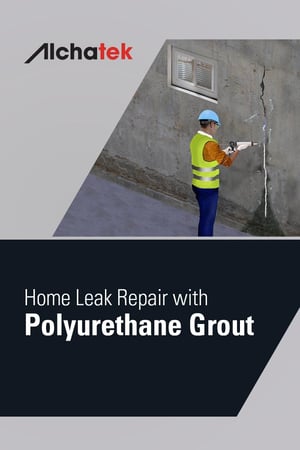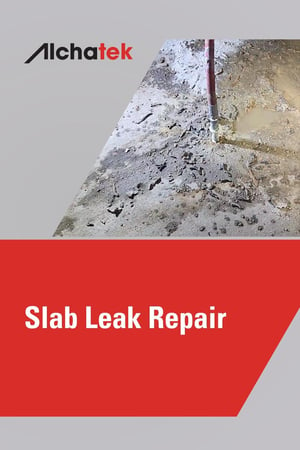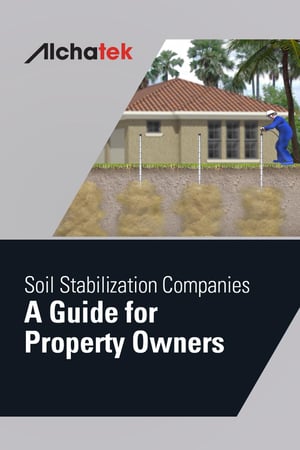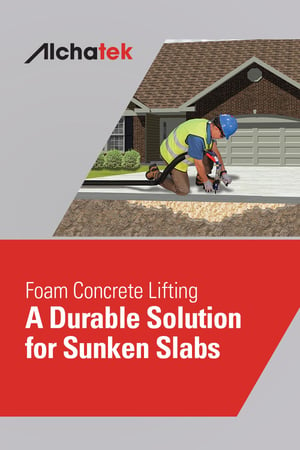
 A pool deck provides the perfect place to relax and enjoy the summer sun. However, an uneven deck can be unsightly and dangerous. This article explains the causes of settling and an advanced pool deck leveling technique using durable, eco-friendly polyurethane.
A pool deck provides the perfect place to relax and enjoy the summer sun. However, an uneven deck can be unsightly and dangerous. This article explains the causes of settling and an advanced pool deck leveling technique using durable, eco-friendly polyurethane.
Causes of Pool Deck Settling
Soil Erosion
Poor drainage, improperly placed downspouts, leaking drain pipes, and broken water lines can all contribute to soil erosion beneath pool decks. As a result, the soil washes away, forming voids and causing the deck to settle and become uneven.
Poor Soil Compaction
During pool construction, contractors should properly compact the backfill soil. However, if they do not execute this step correctly, the soil may settle over time, leading to an uneven deck surface.
Biological Decay
Construction debris, buried trees, and other biodegradable materials can decompose underneath pool decks. Consequently, as these materials break down, voids form, causing the deck to sink.
A Durable Pool Deck Leveling Solution
Polyurethane Foam Injection
Polyurethane foam injection, also known as slab jacking, offers an effective method for leveling pool decks. The process involves injecting expanding foam beneath the settled areas of the deck. As the foam expands, it fills voids, compacts loose soil, and lifts the deck back to its original level position.
Benefits of Polyurethane Foam
- Lightweight: Polyurethane foam is much lighter than alternatives like cement grout, putting less stress on the underlying soil.
- Fast-curing: Polyurethane foam cures in just 15 minutes, allowing you to use the pool deck the same day.
- High strength: Polyurethane foam can support up to 14,000 pounds per square foot, ensuring long-lasting results.
- Environmentally friendly: Furthermore, many polyurethane foams, like Alchatek's AP Lift 430 and AP Lift 475, are NSF-certified to comply with strict environmental standards.
The Pool Deck Leveling Process
- Site evaluation: First, experts conduct a thorough assessment of the pool deck to identify settled areas and determine the best injection points.
- Preparation: Next, if necessary, they make saw cuts in the deck to release any bound slabs.
- Injection: Then, technicians drill small holes into the deck and inject polyurethane foam in controlled bursts.
- Monitoring: Afterward, they monitor the deck for lift using precise measuring tools like dial indicators, zip levels, or laser transits.
- Finishing: Finally, experts drill and inject additional holes as needed to achieve a level surface.
Pool Deck Leveling Contractors
Uneven pool decks can be a safety hazard and detract from the beauty of your backyard oasis. By understanding the causes of pool deck settling and hiring a contractor skilled in advanced solutions like polyurethane foam injection, you can restore your deck to its original level condition.
Fill out this form or call 404-618-0438 for a contractor referral today!



 Are you dealing with a damp basement due to leaking walls? Water seeping into your below-grade rooms can ruin living spaces, destroy stored items, and lead to
Are you dealing with a damp basement due to leaking walls? Water seeping into your below-grade rooms can ruin living spaces, destroy stored items, and lead to 


 Uneven concrete slabs are a common problem for homeowners. Level concrete slabs are ideal. Not only do sunken slabs look unsightly, but they can also pose safety hazards. However, there's no need to worry. In this post, we'll explore why slabs sink and how polyurethane foam can effectively level them.
Uneven concrete slabs are a common problem for homeowners. Level concrete slabs are ideal. Not only do sunken slabs look unsightly, but they can also pose safety hazards. However, there's no need to worry. In this post, we'll explore why slabs sink and how polyurethane foam can effectively level them.
 When it comes to fixing sunken or uneven concrete slabs, homeowners have two main options: slab jacking with polyurethane and mudjacking (lifting with cement slurry). Both methods aim to level the slab without demolishing or replacing it. However, they differ in their approach and effectiveness.
When it comes to fixing sunken or uneven concrete slabs, homeowners have two main options: slab jacking with polyurethane and mudjacking (lifting with cement slurry). Both methods aim to level the slab without demolishing or replacing it. However, they differ in their approach and effectiveness.
 Unstable ground conditions can cause significant damage to structures built on sandy soils. However, sand stabilization with permeation grouting offers a solution to this problem by stabilizing loose sandy soils to create a solid base. This article explains the stabilization process.
Unstable ground conditions can cause significant damage to structures built on sandy soils. However, sand stabilization with permeation grouting offers a solution to this problem by stabilizing loose sandy soils to create a solid base. This article explains the stabilization process.

 Sunken concrete slabs plague many property owners. Over time, erosion, shifting soil, compaction, and other factors lead to concrete settlement. As a result, neglecting this issue can cause structural damage, vehicle damage, trip hazards, and other liability risks. However, contractors skilled in leveling concrete with foam offer an efficient and effective solution.
Sunken concrete slabs plague many property owners. Over time, erosion, shifting soil, compaction, and other factors lead to concrete settlement. As a result, neglecting this issue can cause structural damage, vehicle damage, trip hazards, and other liability risks. However, contractors skilled in leveling concrete with foam offer an efficient and effective solution.
 If you're a homeowner dealing with concrete leaks in your basement or below-grade living spaces, it's essential to hire an expert who specializes in polyurethane leak seal grouts. These advanced products offer a cost-effective, durable solution for waterproofing your home. Moreover, a skilled contractor will ensure that your home leak repair job is done right.
If you're a homeowner dealing with concrete leaks in your basement or below-grade living spaces, it's essential to hire an expert who specializes in polyurethane leak seal grouts. These advanced products offer a cost-effective, durable solution for waterproofing your home. Moreover, a skilled contractor will ensure that your home leak repair job is done right.

 As a homeowner, discovering a leak in your concrete slab can be a stressful and frustrating experience. Left untreated, slab leaks can lead to sinking concrete and structural issues. Fortunately, there is a highly effective solution: slab leak repair with curtain grouting.
As a homeowner, discovering a leak in your concrete slab can be a stressful and frustrating experience. Left untreated, slab leaks can lead to sinking concrete and structural issues. Fortunately, there is a highly effective solution: slab leak repair with curtain grouting.
 If you're searching for a soil stabilization company, you've probably noticed signs of unstable soil around your property, such as cracks or sinking in your patios, walkways, or pool decks. Unstable soil can lead to serious structural issues, but the right soil stabilization contractor can provide a lasting solution. Understanding the soil remediation process is an essential prerequisite for accurately evaluating soil stabilization companies.
If you're searching for a soil stabilization company, you've probably noticed signs of unstable soil around your property, such as cracks or sinking in your patios, walkways, or pool decks. Unstable soil can lead to serious structural issues, but the right soil stabilization contractor can provide a lasting solution. Understanding the soil remediation process is an essential prerequisite for accurately evaluating soil stabilization companies. 

 If you've noticed that your driveways, patios, or sidewalks have sunken slabs, it's time to consider a reliable solution: foam concrete lifting. This innovative technique involves pumping a lightweight, yet strong, material beneath the slab to level it out. This article explores the benefits of foam concrete lifting and why it's a great option for homeowners.
If you've noticed that your driveways, patios, or sidewalks have sunken slabs, it's time to consider a reliable solution: foam concrete lifting. This innovative technique involves pumping a lightweight, yet strong, material beneath the slab to level it out. This article explores the benefits of foam concrete lifting and why it's a great option for homeowners.